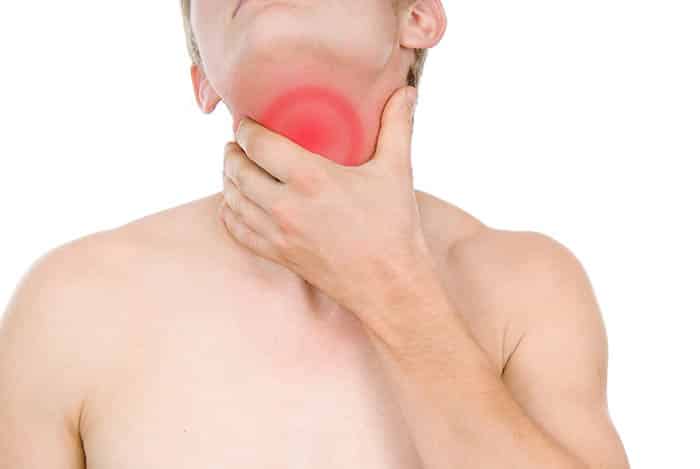Sjögren's disease
Last updated 11/05/2020 by The pain clinics - Interdisciplinary Health
Sjögren's disease
Seagrass disease is a chronic, rheumatic, autoimmune disease in which white blood cells destroy the body's endocrine glands, specifically the salivary glands and lacrimal glands. The most characteristic symptoms of seagrass disease thus involve dry mouth and dry eyes.
Symptoms of Seagrass Disease
The two most common symptoms are dry mouth and dry, often irritated, eyes. These in combination are often called sicca symptoms. Other places that can be symptomatic are skin, nose and vagina. In more severe cases, it can also damage important organs in the body. Fatigue, muscle and joint pain also occur frequently in this condition.
Dry mouth and dry eyes are the two most characteristic symptoms of Sjøgren's disease
We must keep in mind that it is quite common to have other autoimmune conditions as well, if one is affected by this diagnosis - such as, for example, rheumatoid arthritis and / or lupus. Other symptoms may include:
Swollen Salivary Glands (Especially those behind the jaw and in front of the ears)
Skin Rash and Dry Skin
Prolonged Exhaustion
Joint Pain, Stiffness and Swelling
Vaginal Dryness
Persistent dry cough
Clinical Signs and Findings
Sea lice can cause visual disturbances, blurred vision, chronic eye discomfort, repeated mouth infections, swollen glands, hoarseness and difficulty swallowing or eating. Other complications may include:
Hole in Tenna
Saliva production in the mouth protects the teeth from the bacteria which can damage the teeth. If this is reduced, you have a higher chance of developing dental problems.
yeast Infections
People with Seagrass have easier to develop infections due to yeast fungi. This affects especially the mouth and abdomen.
Eye problems
The eyes rely on fluid to function optimally. Dry eyes can cause light sensitivity, blurred vision and potential damage to the outer eye.
Affected by Seagrass? Join the Facebook group «Rheumatism - Norway: Research and news»For the latest updates on research and media writing about this disorder. Here, members can also get help and support - at all times of the day - through the exchange of their own experiences and advice.
Diagnosis of Seagrass Disease
You do not know the exact reason for developing Sjøgren's disease, but a genetic, hereditary link to the disease has been found. Due to Sjøgren's extensive register of symptoms, it can be difficult to diagnose. It is also known that certain drugs can cause such symptoms and thus be misinterpreted as Sjøgren's disease.
Relative results can be made by, among other things, blood tests, where you see if the person has high levels of ANA and rheumatoid factor - which can help diagnose the disease. One will also see results on the specific antibodies SSA and SSB. Other tests include the Bengal Rose test, which looks for distinctive changes in tear function, and the Schirmer test, which measures tear production. Saliva function and production will also be measured in people where Sjøgrens is suspected.
Who is affected by Sjøgrens?
Women are affected considerably more often by Sjøgren's disease than men (9: 1). The disease usually occurs at the age of 40-80 years. People who develop Sjøgrens often have a family history of the condition or other autoimmune diseases. Sjøgrens has been detected in as much as 30-50% of those with rheumatoid arthritis, and among 10-25% of those with systemic lupus.
Treatment of Seagrass Disease
There is no treatment that completely restores the gland's functions, but symptomatic measures have been developed - including eye drops, artificial tears and the drug cyclosporine, all of which help with chronic, dry eyes. Patients with the condition should contact their GP for the best possible follow-up and drug treatment.
The most common form of treatment for autoimmune conditions is included immunosuppression - that is, drugs and measures that limit and cushion the body's own defense system. Gene therapy that limits inflammatory processes in immune cells has shown great progress in recent times, often in combination with increased activation of anti-inflammatory genes and processes.
Also read: - Complete overview of autoimmune diseases







Martina Hansen Hospital should probably be "to be trusted" I have been tested there for the disease, but "do not have it" But I have all signs of Sjøgren disease Dry eyes that I have to wear "bandage lenses" under glasses. Dry skin that is "porous" and very "itchy / irritable", as well as ailments with dry vagina. Since I was diagnosed with Polymyalgia revmatica in 2000 and later also Fibromyalgia, I have used Prednisilone in different strengths. I often see a GP for a check-up. My eye and skin ailments are very bothersome.
Thanks for the information.
I have been diagnosed with seagrass syndrome PG it has bothered me for years with dry mucous membranes in the body PG broken mouth with lots of inflammation and rash and itching on the skin for which I have received medication, but what it never goes away, has lots of osteoarthritis in joints, operated in the back and neck and inflammation of the hip. Yes, this disease is troublesome and painful, but just have to learn and live with it, and take what arises eventually.